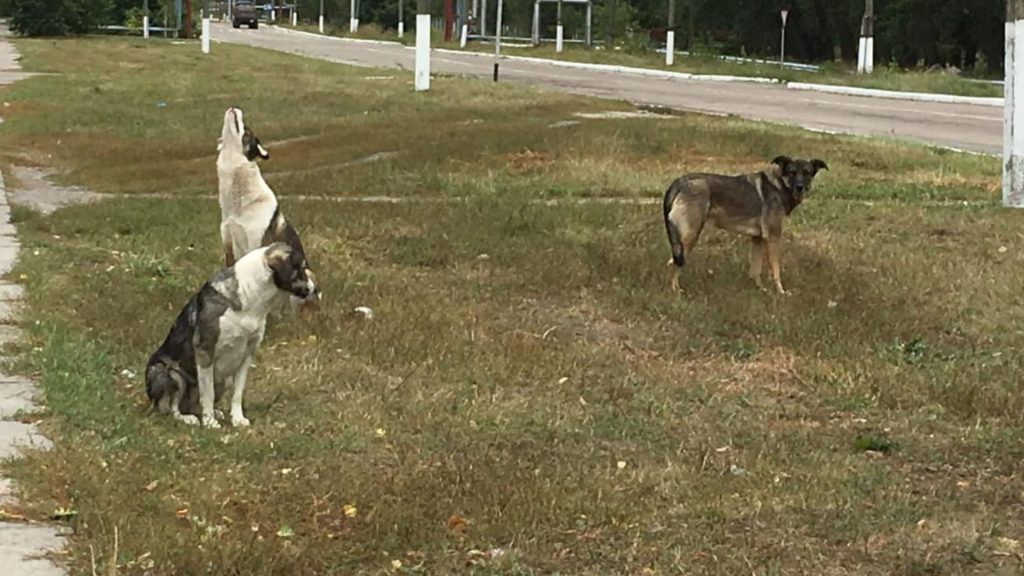Chornobyl dogs show no nuclear radiation-induced mutations, scientists shocked – Interesting Engineering

New study reveals a surprising finding about the dogs living in and around the exclusion zone.a day agoa day ago2 days ago2 days ago2 days ago3 days ago3 days ago4 days ago4 days ago4 days ago36 minutes agoan hour ago3 hours ago3 hours ago5 hours ago6 hours ago6 hours ago7 hours ago7 hours ago8 hours agoMrigakshi DixitChornobyl dogs.Norman Kleiman
The Chornobyl disaster in 1986 left a lasting impact on the surrounding environment. But a new study reveals a surprising finding about the dogs living in and around the exclusion zone.Researchers investigated whether decades of low-level radiation exposure had caused genetic mutations in dogs living at the Chornobyl Nuclear Power Plant (NPP) compared to those in the nearby city of Chornobyl.The study was conducted by NC State University and Columbia University “We have been working with two dog populations that, while separated by just 16 kilometers, or about 10 miles, are genetically distinct,” said Matthew Breen, the corresponding author of the study.“We are trying to determine if low-level exposure over many years to environmental toxins such as radiation, lead, etcetera, could explain some of those differences,” Breen added. The previous study found 391 regions in the dog genomes that differed between the Chornobyl NPP and City populations — with some linked to DNA damage repair. This new study aimed to delve deeper to find evidence of accumulated mutations caused by radiation exposure.“First, we contextualized the level of genetic differences between two dog populations, which indicated that the genetics of Chornobyl City dogs were very similar to dog populations in Russia, Poland and the surrounding areas,” said Megan Dillon, Ph.D. candidate at NC State and lead author of the study. “That way, we were able to use the Chornobyl City dogs as a representative control population to compare with the NPP dogs,” Dillon added. The study analyzed the dogs’ genomes at various levels, looking for evidence of mutations passed down through generations. They were specifically searching for evidence of germline mutations, which are genetic changes that occur in reproductive cells and can be inherited by offspring.“We know that, for example, exposure to high doses of radiation can introduce instability from the chromosomal level on down. While this dog population is 30 or more generations removed from the one present during the 1986 disaster, mutations would likely still be detectable if they conferred a survival advantage to those original dogs. But we didn’t find any such evidence in these dogs,” Breen added.The study found “no evidence” of radiation-induced genetic mutations in the dogs. However, the researchers acknowledge that this does not exclude the possibility that other factors, such as natural selection, have contributed to the observed genetic differences between the two dog populations.“It’s possible that the dogs that survived long enough to breed already had genetic traits that increased their ability to survive. So perhaps there was extreme selective pressure at the start, and then the dogs at the power plant just remained separate from the city population. Investigating that question is an important next step that we are now working on,” Dillon added. The researchers highlight the importance of continued environmental health studies in the aftermath of such disasters.“As it is certain, given our increasingly technological and industrial societies, there will invariably be other such disasters in the future, and we need to understand the potential health risks and how best to protect people,” said Norman Kleiman, co-author, in the press release.The findings were published in the journal PLOS ONE.Stay up-to-date on engineering, tech, space, and science news with The Blueprint.By clicking sign up, you confirm that you accept this site’s Terms of Use and Privacy PolicyMrigakshi Dixit Mrigakshi is a science journalist who enjoys writing about space exploration, biology, and technological innovations. Her work has been featured in well-known publications including Nature India, Supercluster, The Weather Channel and Astronomy magazine. If you have pitches in mind, please do not hesitate to email her.11 hours ago11 hours ago12 hours ago12 hours agoPremiumIE PROFollow
Source: https://interestingengineering.com/science/chornobyl-dogs-no-radiation-induced-mutations




